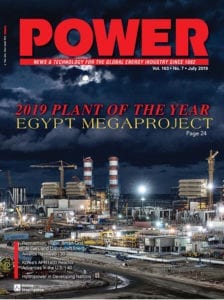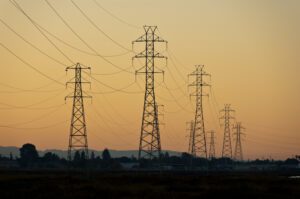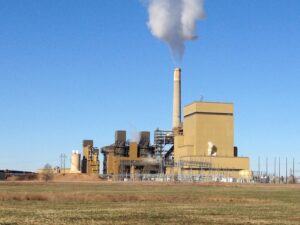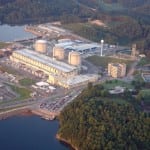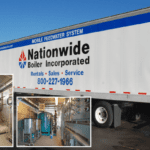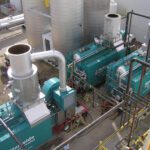When maintenance is required on permanently installed fire protection equipment, it can jeopardize safety. One nuclear power station added additional fire pumps to ensure plant needs could be met under any circumstances.
Among the various types of energy that keep a city up and running, none demands the same level of attention and care as nuclear power plants. Fire presents a major hazard at these facilities, posing an increased risk because it has the potential to result in serious damage that could affect the ability of plant operators to safely shut down the plant, causing the reactor core to overheat and radiation to leak.
As a result, fire protection systems at nuclear plants require routine testing and maintenance to assure a high degree of reliability in the event of a fire. Other times, fire protection systems are taken offline for repairs, equipment replacement, or upgrades. Fire pump failure could spell disaster for a nuclear power plant, but regularly scheduled testing and maintenance, as well as emergency backup systems, help minimize those risks.
Adhering to Fire Protection Requirements
All nuclear power plant systems are required to undergo periodic maintenance and safety checks to ensure systems are working properly. In order to comply with enhanced fire protection guidelines issued by the Nuclear Regulatory Commission (NRC) in 2004, a nuclear power plant in the southeastern U.S. needed to maintain two working primary fire pumps and two jockey pumps, or it would be required to take the nuclear reactor offline.
Even during routine maintenance, the NRC requires that four pumps be operational. If repairs are needed and they cannot be completed within the mandated maintenance window, which is typically three to five days, regulations dictate that the nuclear reactor must be taken offline—a consequence that would result in an enormous expense for plant operators, as well as repercussions for consumers who have come to depend on an uninterrupted supply of power.
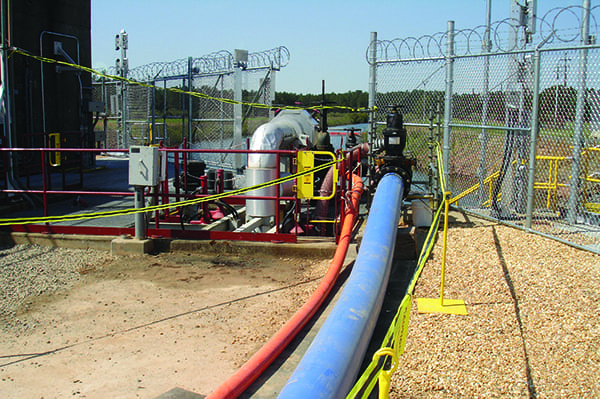 |
|
1. Engineers designed a backup fire protection system and tied it into a nuclear power plant’s main fire header for use during unplanned emergencies and when permanently installed equipment requires maintenance. Courtesy: Xylem |
In order to meet NRC requirements, the nuclear plant engaged Xylem Rental Solutions to provide a temporary backup fire protection system that could be activated when one or more of the permanent pumps were taken offline for maintenance (Figure 1). The customer needed to ensure the temporary backup fire protection system was designed to meet the unique flow, head, system, and operational requirements of the plant. Additionally, the system had to be installed quickly and needed to comply with numerous plant-specific procedures. Lastly, the facility needed a guarantee that temporary backup fire protection equipment would be available on short notice.
Custom Solution Ensures Continuity and Compliance
Designing fire protection systems for nuclear power plants is not a one-size-fits-all endeavor. Systems must be customized based on individual plant risks, layout and schematics, piping infrastructure, and overall plant conditions. In addition to addressing unique plant configurations, custom solutions need to maintain compliance with licensing requirements, as well as integrate strict NRC guidelines into the distinct environment of an individual plant. This can be painstaking and demands a great deal of expertise.
During the design stage, it didn’t take long for Xylem engineers to conclude that the original nuclear plant layout was not designed to properly address routine maintenance of the permanent fire protection system. To resolve the issue, Xylem Rental Solutions engaged its dewatering application experts to design a custom manifold that could hook up to a flange connection on the main fire header, enabling a temporary jockey or main fire pump—or both—to be connected to the system.
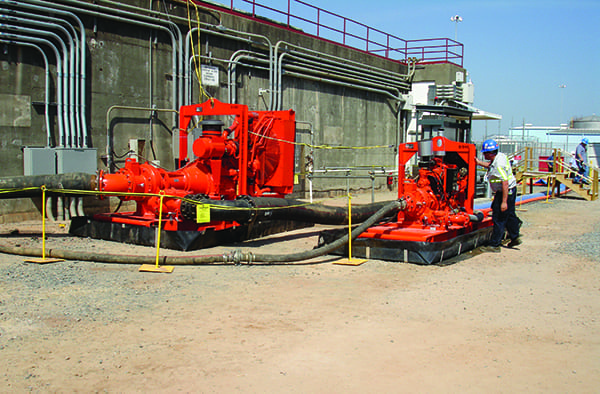 |
|
2. Godwin Dri-Prime HL250 and Dri-Prime HL100 pumps were installed to serve as an emergency backup for a nuclear plant’s permanent fire protection system. Courtesy: Xylem |
Based on site conditions and system needs, the Godwin Dri-Prime HL250 and Dri-Prime HL100 pumps (Figure 2) were selected to serve as the basis of the nuclear plant’s emergency backup system. The high-pressure, diesel-powered pumping units sit on skids for plug-and-play installation and quick removal in an emergency water pumping situation. The customer and Xylem also worked together to develop a step-by-step procedure for the installation and testing of these temporary pumps to place them in and out of service during regular testing and maintenance of the plant’s fire protection system equipment as required by the NRC.
Once the equipment was manufactured and delivered, installation took about a week, followed by a successful one-day test period. Based on the outcome of the initial project, the customer awarded Xylem a multiyear contract to provide fire protection pumps and ancillary equipment on an as-needed, will-call basis. To date, the customer has renewed that contract annually for more than 12 years. As part of its ongoing contracted services, Xylem continues to work closely with plant management to update the facility’s temporary backup fire protection pumps as increasing security measures dictate changes to overall fire protection system design for nuclear power plants.
Giving Special Consideration to Aging Plants
Age is another factor that needs to be taken into consideration regarding fire protection systems for nuclear power plants. “There is very little new nuclear power plant construction taking place in the U.S., and most plants are reaching the end of their initial 40-year operating license,” said Xylem’s pump supplier representative.
The average age of the 96 nuclear power reactors currently operating in the U.S. is 38.5 years, according to the Energy Information Administration. Nearly all of these plants have received NRC-approved extensions of their operating licenses from 40 to 60 years.
As nuclear power plants age, they require more intensive monitoring and preventive maintenance to operate safely. Additionally, equipment obsolescence and system aging issues result in the need to modify, upgrade, or replace pieces of equipment or complete systems. The NRC requires plants seeking license renewals to develop aging management programs and incorporate aging issues into many of its inspections.
To continue operating, many nuclear plants are taking a proactive stance in preventing aging-related failures and investing in updating their systems. “Safety comes ahead of anything else,” said a pump supplier representative for Xylem.
Planning for the Future
Over the years, Xylem also has incorporated new technology into the plant’s temporary backup fire protection system, including a PrimeGuard controller to start and stop the pump automatically without requiring operator intervention, and pressure transducers to monitor water levels and pressures in the fire system. Along with temporary backup fire protection equipment and support services, the customer has expanded the contract terms to provide rental and permanent equipment to other areas of the plant.
“The customer has found it beneficial to work with a rental solutions vendor that has multiple pumps in its fleet and who can be depended on to meet last-minute deadlines,” said the pump equipment representative.
When it comes to fire protection systems, distinct customer segments like nuclear power plants require a high level of technical expertise. Whether the project calls for fast-track emergency backup pumps or reliable, cost-effective long-term operation, it is important to partner with a rental solutions provider that offers a highly diversified mix of equipment and a team of trained experts for support. ■
—Dave Donahue is an outside sales representative and former branch manager for Xylem (dave.donahue@xyleminc.com).


